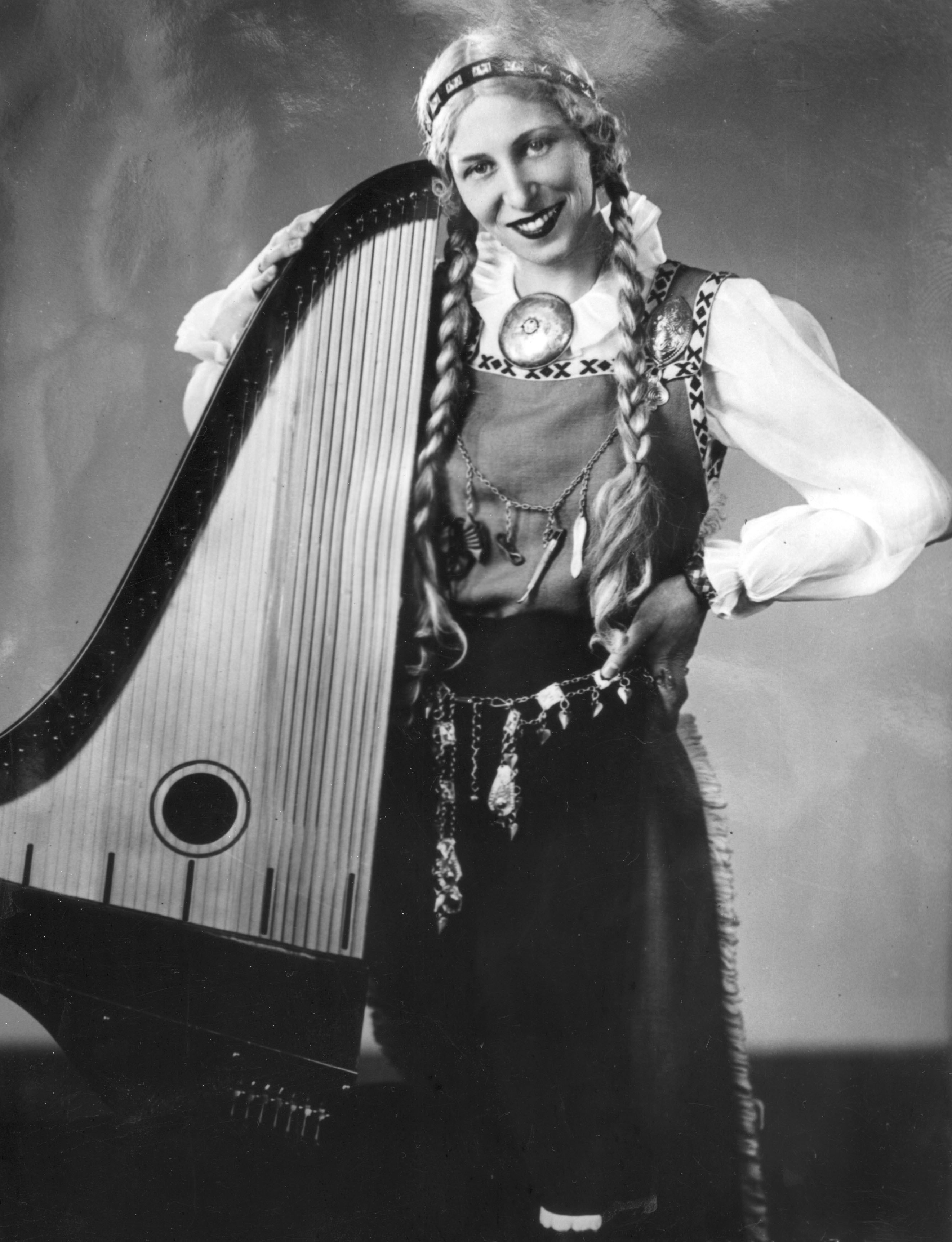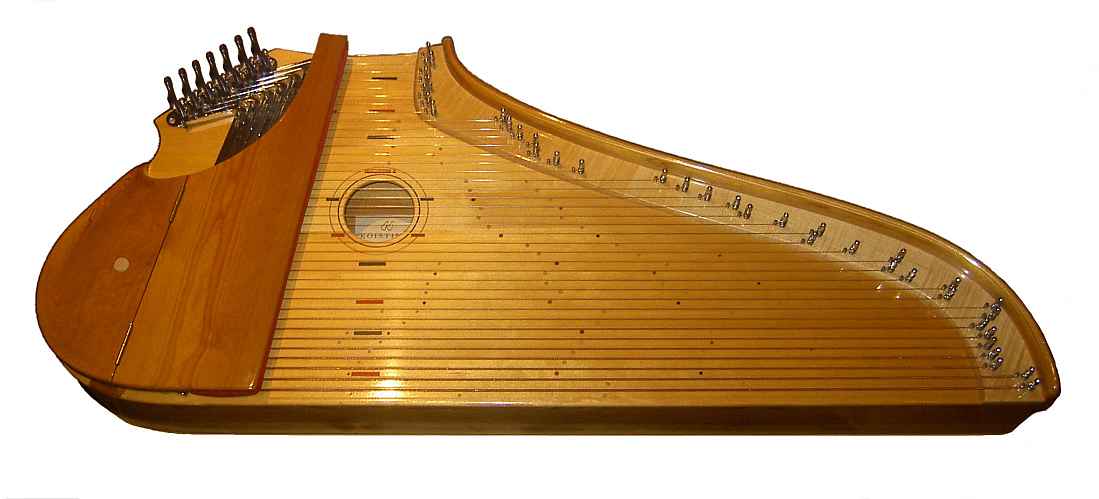|
Ulla Katajavuori
Ulla Kyllikki Katajavuori-Koskimies (16 June 1909 in Rauma — 5 October 2001 in Helsinki) was a Finnish musician who played the traditional Finnish kantele, performing from the 1930s to the 1990s. One of her recordings is the Karelian folk song '' Konevitsan kirkonkellot''. Katajavuori played the modern, multi-stringed version of the kantele, and was considered a virtuoso and maintainer of the tradition, especially during the 1960s when the instrument was of low popularity, and 5-string player Martti Pokela Martti Eliel Pokela (23 January 1924 – 23 August 2007) was a Finnish folk musician and composer. Pokela was an expert with the kantele, Finland's national musical instrument. Life and career Pokela and his wife, Marjatta Pokela, were wide ... was one of the few other recognised musicians playing the instrument. __NOTOC__ Discography * ''Ulla Katajavuori: Grand Lady of Kantele.'' IMU-CD 101 Sources * Helistö, Paavo: Ulla Katajavuori — kanteletar. Radio program ... [...More Info...] [...Related Items...] OR: [Wikipedia] [Google] [Baidu] |
Rauma, Finland
Rauma (; sv, Raumo) is a town and municipality of around () inhabitants on the west coast of Finland, north of Turku, and south of Pori. Its neighbouring municipalities are Eura, Eurajoki, Laitila and Pyhäranta. Granted town privileges on 17 April 1442 (then under the rule of Sweden), Rauma is known for its paper and maritime industry, high quality lace (since the 18th century) and the old wooden architecture of the city centre (Old Rauma, Vanha Rauma), which is a UNESCO World Heritage site. History In the 14th century, before it was declared a town, Rauma had a Franciscan monastery and a Catholic church. In 1550, the townsmen of Rauma were ordered to relocate to Helsinki, but this was unsuccessful and Rauma continued to grow. Practically the whole wooden part of the town of Rauma was devastated in the fires of 1640 and 1682. The city centre, which was as large as the town was until 1809, has approximately 600 wooden buildings. The neo-renaissance style of many of the house ... [...More Info...] [...Related Items...] OR: [Wikipedia] [Google] [Baidu] |
Helsinki
Helsinki ( or ; ; sv, Helsingfors, ) is the Capital city, capital, primate city, primate, and List of cities and towns in Finland, most populous city of Finland. Located on the shore of the Gulf of Finland, it is the seat of the region of Uusimaa in southern Finland, and has a population of . The Helsinki urban area, city's urban area has a population of , making it by far the List of urban areas in Finland by population, most populous urban area in Finland as well as the country's most important center for politics, education, finance, culture, and research; while Tampere in the Pirkanmaa region, located to the north from Helsinki, is the second largest urban area in Finland. Helsinki is located north of Tallinn, Estonia, east of Stockholm, Sweden, and west of Saint Petersburg, Russia. It has History of Helsinki, close historical ties with these three cities. Together with the cities of Espoo, Vantaa, and Kauniainen (and surrounding commuter towns, including the eastern ... [...More Info...] [...Related Items...] OR: [Wikipedia] [Google] [Baidu] |
Kantele
A kantele () or kannel () is a traditional Finnish and Karelian plucked string instrument (chordophone) belonging to the south east Baltic box zither family known as the Baltic psaltery along with Estonian kannel, Latvian kokles, Lithuanian kanklės and Russian gusli. Construction Small kantele Modern instruments with 15 or fewer strings are generally more closely modeled on traditional shapes, and form a category of instrument known as small kantele, in contrast to the modern concert kantele. The oldest forms of kantele have five or six horsehair strings and a wooden body carved from one piece; more modern instruments have metal strings and often a body made from several pieces. The traditional kantele has neither bridge nor nut, the strings run directly from the tuning pegs to a metal bar (''varras'') set into wooden brackets (''ponsi''). Though not acoustically efficient, this construction is part of the distinctive sound of the instrument. The most typical and tradi ... [...More Info...] [...Related Items...] OR: [Wikipedia] [Google] [Baidu] |
Karelia
Karelia ( Karelian and fi, Karjala, ; rus, Каре́лия, links=y, r=Karélija, p=kɐˈrʲelʲɪjə, historically ''Korjela''; sv, Karelen), the land of the Karelian people, is an area in Northern Europe of historical significance for Russia (including the Soviet era), Finland, and Sweden. It is currently divided between northwestern Russia (specifically the federal subjects of the Republic of Karelia and Leningrad Oblast) and Finland (the regions of South Karelia, North Karelia, and the eastern portion of modern-day Kymenlaakso). Use of name Various subdivisions may be called Karelia. Finnish Karelia was a historical province of Finland, and is now divided between Finland and Russia, often called just ''Karjala'' in Finnish. The eastern part of this chiefly Lutheran area was ceded to Russia after the Winter War of 1939–40. The Republic of Karelia is a Russian federal subject, including East Karelia with a chiefly Russian Orthodox population. Within present-da ... [...More Info...] [...Related Items...] OR: [Wikipedia] [Google] [Baidu] |
Konevitsan Kirkonkellot
Konevitsan kirkonkellot (English: The Church Bells of Konevitsa) is a Karelian folk melody, best known as the 1975 recording of Finnish music group Piirpauke. It repeats the chime of the church bells of the Konevsky Monastery (Konevitsan luostari in Finnish) in Lake Ladoga. The melody was first recorded by kantele player Ulla Katajavuori in 1952. Other recorded versions include the 1978 version by Matti Kontio, Martti Pokela and Eeva-Leena Sariola, and the 2002 version by heavy metal band Sentenced, used as an intro in their album ''The Cold White Light''. The Piirpauke version Piirpauke's ''Konevitsan kirkonkellot'' was released in their 1975 debut album ''Piirpauke''. The song is composed of two parts of the original theme with an improvised part in the middle. The improvised part is known of the classic guitar solo by Hasse Walli. French horn was played by 17-year-old music student Esa-Pekka Salonen Esa-Pekka Salonen (; born 30 June 1958) is a Finnish orchestral conduc ... [...More Info...] [...Related Items...] OR: [Wikipedia] [Google] [Baidu] |
Martti Pokela
Martti Eliel Pokela (23 January 1924 – 23 August 2007) was a Finnish folk musician and composer. Pokela was an expert with the kantele, Finland's national musical instrument. Life and career Pokela and his wife, Marjatta Pokela, were widely credited with ushering in a revival in interest in Finnish folk music beginning in the 1950s. Their daughter, Eveliina Pokela, began performing with them in the 1960s. Pokela merged traditional Finnish folk music with contemporary sounds. The family's albums have also been released outside of Finland. Pokela taught kantele playing at the Sibelius Academy in Helsinki and Kuopio until 1987. He was the founder of the academy's folk music department, where he was named a full professor in 1980. He is buried in the Hietaniemi Cemetery in Helsinki. Albums * Keskiyön Auringon Lauluja (1969) * ''Best of Kantele'' (1995) * ''Sonata For Kantele'' (1996) * ''Snow Kantele'' (1998) * "Tuulikumpu" (2001) * ''Improsette by Martti Pokela'' (2005) ... [...More Info...] [...Related Items...] OR: [Wikipedia] [Google] [Baidu] |
Kantele Players
A kantele () or kannel () is a traditional Finnish and Karelian plucked string instrument (chordophone) belonging to the south east Baltic box zither family known as the Baltic psaltery along with Estonian kannel, Latvian kokles, Lithuanian kanklės and Russian gusli. Construction Small kantele Modern instruments with 15 or fewer strings are generally more closely modeled on traditional shapes, and form a category of instrument known as small kantele, in contrast to the modern concert kantele. The oldest forms of kantele have five or six horsehair strings and a wooden body carved from one piece; more modern instruments have metal strings and often a body made from several pieces. The traditional kantele has neither bridge nor nut, the strings run directly from the tuning pegs to a metal bar (''varras'') set into wooden brackets (''ponsi''). Though not acoustically efficient, this construction is part of the distinctive sound of the instrument. The most typical and tra ... [...More Info...] [...Related Items...] OR: [Wikipedia] [Google] [Baidu] |
Finnish Folk Musical Groups
Finnish may refer to: * Something or someone from, or related to Finland * Culture of Finland * Finnish people or Finns, the primary ethnic group in Finland * Finnish language, the national language of the Finnish people * Finnish cuisine See also * Finish (other) * Finland (other) * Suomi (other) Suomi means ''Finland'' in Finnish. It may also refer to: *Finnish language * Suomi (surname) * Suomi, Minnesota, an unincorporated community * Suomi College, in Hancock, Michigan, now referred to as Finlandia University * Suomi Island, Western ... * {{disambiguation Language and nationality disambiguation pages ... [...More Info...] [...Related Items...] OR: [Wikipedia] [Google] [Baidu] |
1909 Births
Nineteen or 19 may refer to: * 19 (number), the natural number following 18 and preceding 20 * one of the years 19 BC, AD 19, 1919, 2019 Films * ''19'' (film), a 2001 Japanese film * ''Nineteen'' (film), a 1987 science fiction film Music * 19 (band), a Japanese pop music duo Albums * ''19'' (Adele album), 2008 * ''19'', a 2003 album by Alsou * ''19'', a 2006 album by Evan Yo * ''19'', a 2018 album by MHD * ''19'', one half of the double album ''63/19'' by Kool A.D. * ''Number Nineteen'', a 1971 album by American jazz pianist Mal Waldron * ''XIX'' (EP), a 2019 EP by 1the9 Songs * "19" (song), a 1985 song by British musician Paul Hardcastle. * "Nineteen", a song by Bad4Good from the 1992 album '' Refugee'' * "Nineteen", a song by Karma to Burn from the 2001 album ''Almost Heathen''. * "Nineteen" (song), a 2007 song by American singer Billy Ray Cyrus. * "Nineteen", a song by Tegan and Sara from the 2007 album '' The Con''. * "XIX" (song), a 2014 song by Slipk ... [...More Info...] [...Related Items...] OR: [Wikipedia] [Google] [Baidu] |
2001 Deaths
This is a list of deaths of notable people, organised by year. New deaths articles are added to their respective month (e.g., Deaths in ) and then linked here. 2022 2021 2020 2019 2018 2017 2016 2015 2014 2013 2012 2011 2010 2009 2008 2007 2006 2005 2004 2003 2002 2001 2000 1999 1998 1997 1996 1995 1994 1993 1992 1991 1990 1989 1988 1987 See also * Lists of deaths by day The following pages, corresponding to the Gregorian calendar, list the historical events, births, deaths, and holidays and observances of the specified day of the year: Footnotes See also * Leap year * List of calendars * List of non-standard ... * Deaths by year {{DEFAULTSORT:deaths by year ... [...More Info...] [...Related Items...] OR: [Wikipedia] [Google] [Baidu] |




